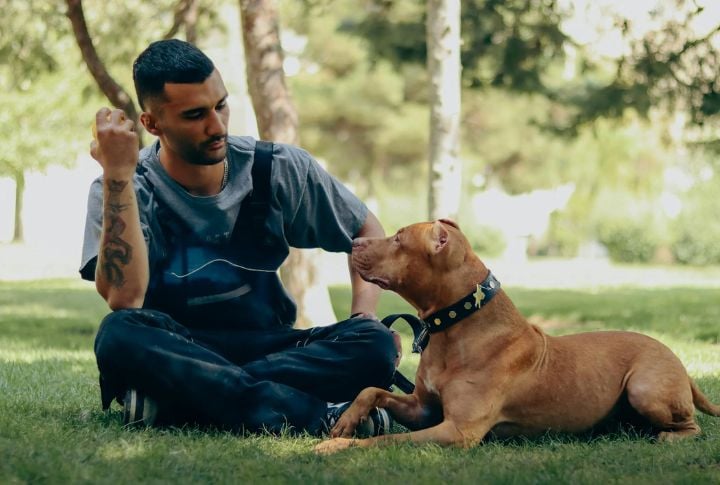15 Things To Know About Dog Breed Bans

Breed bans are sweeping through cities across the United States, but do they protect the public? The debate has never been more intense, with increasing calls for banning specific dog breeds like pit bulls. Join us as we explore the facts behind these laws and what they mean for communities.
Breed-Specific Laws Are Spreading Fast

Breed-specific legislation began gaining traction in the 1980s following several high-profile dog attacks. Cities like Denver and Miami-Dade County led the way with strict bans, mostly targeting pit bulls. Since then, over 1,000 U.S. cities have adopted some form of breed restriction, which sparks national debate.
Certain Breeds Are Labeled As Dangerous

Pit bulls remain the most frequently banned dogs, but they aren’t alone. Rottweilers and even German Shepherds have been restricted in certain municipalities. These breeds are often labeled “dangerous” based on appearance or past incidents despite mixed evidence of their aggression.
Breed Bans Operate With Strict Rules

Breed bans typically prohibit ownership or even transport of certain dog breeds within city limits. Enforcement varies—some cities require immediate surrender, others mandate muzzles. Violating these laws can lead to steep fines. In some cases, owners are forced to relocate their pets. Depending on the severity and local enforcement policies, others may even face legal action.
Public Safety Is The Driving Force

Many breed bans are introduced after severe dog attacks that trigger public fear. Lawmakers argue that restricting specific breeds can prevent future harm. However, critics question whether fear outweighs facts, especially when most severe bites involve dogs not covered by the bans.
Media Coverage Shapes Public Opinion

Television reports and viral headlines often highlight attacks involving pit bulls, fueling public anxiety. Rarely do they provide context or note the role of negligent owners. As a result, certain breeds gain a reputation that can overshadow actual behavior or broader statistical trends on dog-related injuries.
Misidentifying Dogs Leads To Enforcement Problems

Breed bans rely on visual identification, which often proves unreliable. Many mixed breeds resemble those on banned lists but may pose no danger. This mislabeling results in unfair targeting and removal of safe pets, eroding trust in local animal control and raising serious ethical concerns.
The Burden On Animal Shelters Is Growing

When cities adopt breed bans, shelters are often left to manage the fallout. Dogs from banned breeds are surrendered in large numbers, overwhelming the space and staff. Many of these animals are healthy and well-behaved but are less likely to be adopted under restrictive laws, leading to higher euthanasia rates.
Responsible Owners Also Pay The Price

Not all owners of banned breeds are careless. Many provide proper training, care, and socialization. Yet, breed bans ignore this context, penalizing people who have done everything right. Many families are compelled to surrender their cherished pets, even when these dogs have no history of aggression or incidents.
Alternatives Offer More Effective Solutions

Experts increasingly argue for behavior-based laws that address individual dog conduct rather than appearance. These include stricter leash laws, mandatory training for aggressive dogs, and penalties for negligent owners. Such measures focus on accountability without sweeping generalizations, and they’ve shown promising results in some communities.
Breed Bans Complicate Emergency Evacuations

During disasters, dog owners with banned breeds face barriers at shelters and rescue checkpoints. Breed-specific rules can delay evacuation or separate pets from families. Lives are at risk when breed bans interfere with emergency response and public safety measures.
Breed Bans Drain Local Budgets And Resources

Enforcing breed bans requires legal oversight and public outreach. These expenses add up by diverting funds from more effective public safety initiatives. Cities also face legal battles and rising shelter costs to make breed bans a recurring expense that many communities are now re-evaluating.
Advocacy Groups Push For Smarter Dog Laws

Organizations like the ASPCA and Best Friends Animal Society oppose breed-specific legislation. They advocate for behavior-based evaluations and education programs for pet owners. These groups also assist in legal challenges and support families affected by unjust bans by driving a movement toward more equitable policies.
Cities Are Repealing Breed Bans With Positive Results

Miami-Dade overturned its decades-long pit bull ban in 2023 by citing poor enforcement and shifting public attitudes. Other cities, like Springfield, Missouri, followed suit. Following repeal, cities have reported no notable increase in dog attacks, which supports claims that well-crafted, breed-neutral policies are more effective.
Breed Bans Remain A Patchwork Across The Country

Some states, like Colorado and Florida, have seen major cities repeal breed bans while others still enforce them. Legal battles continue, with preemption laws in certain states barring local governments from imposing new prohibitions. The national legal framework remains fragmented and hotly contested.
The Shift Toward Breed-Neutral Laws Is Growing

Public sentiment continues to shift away from breed-specific bans. Insurance companies, housing authorities, and even emergency responders are reevaluating outdated policies. As real-world complications emerge and more cities revise their laws, the future of dog regulation appears to be leaning toward practical, inclusive solutions.






